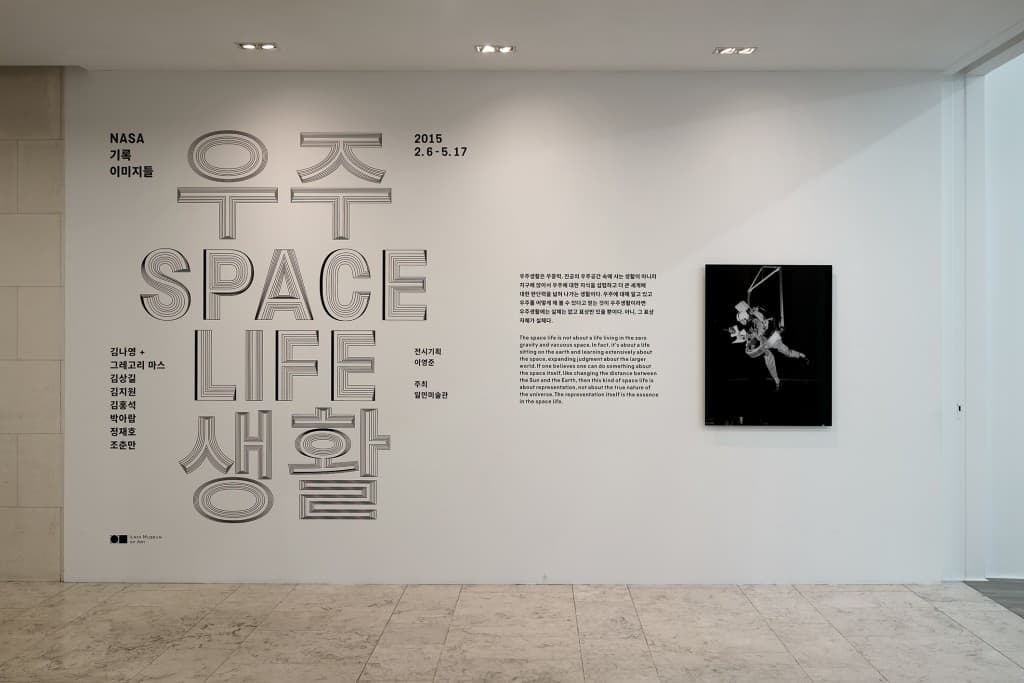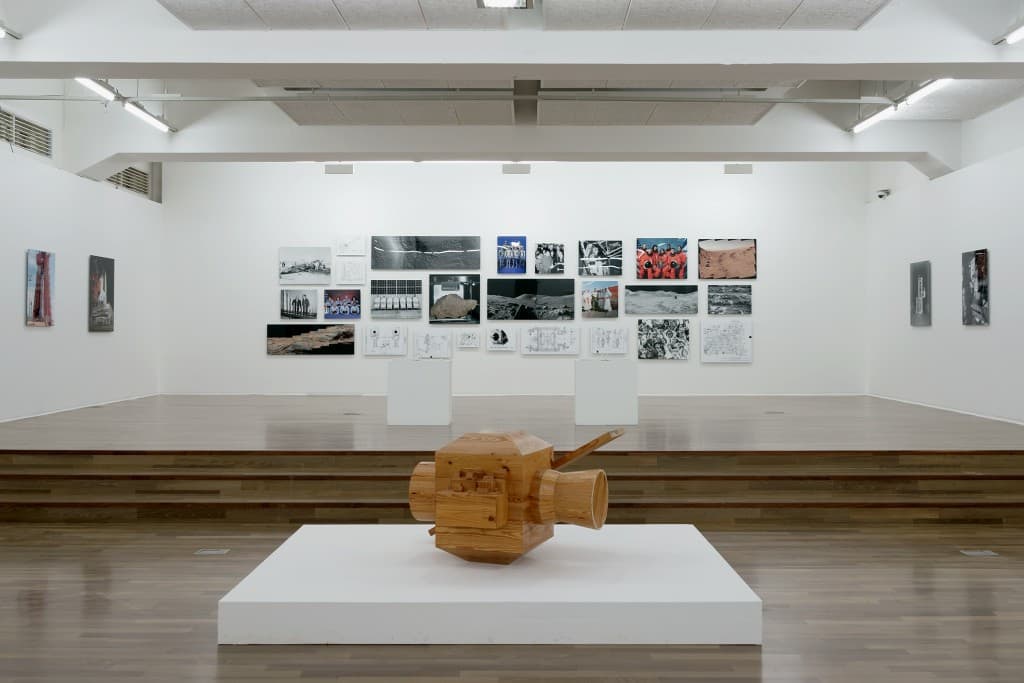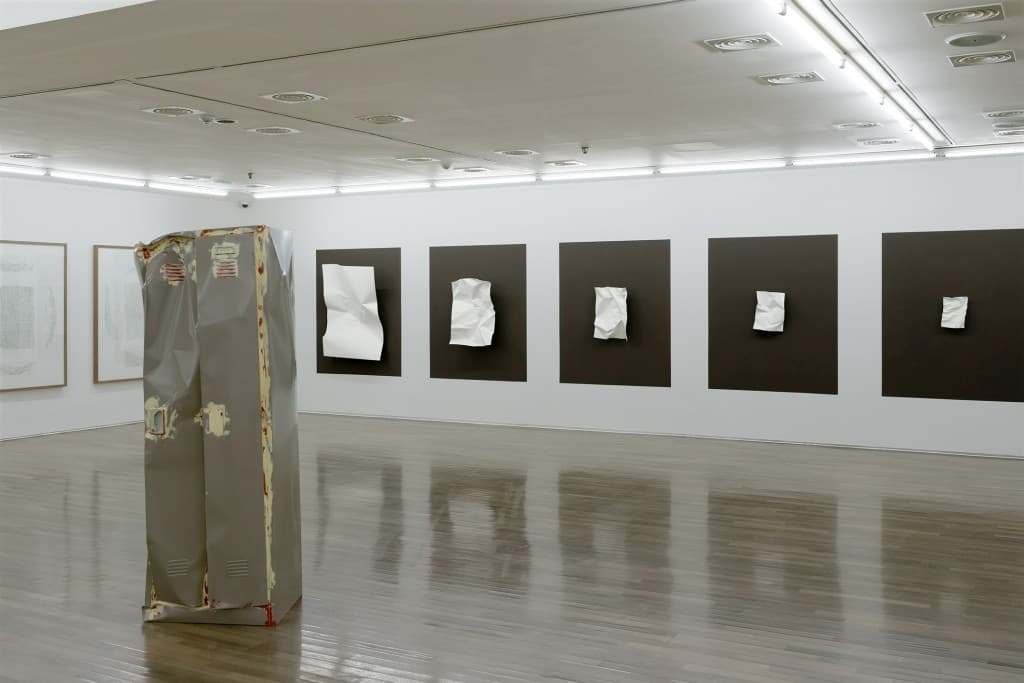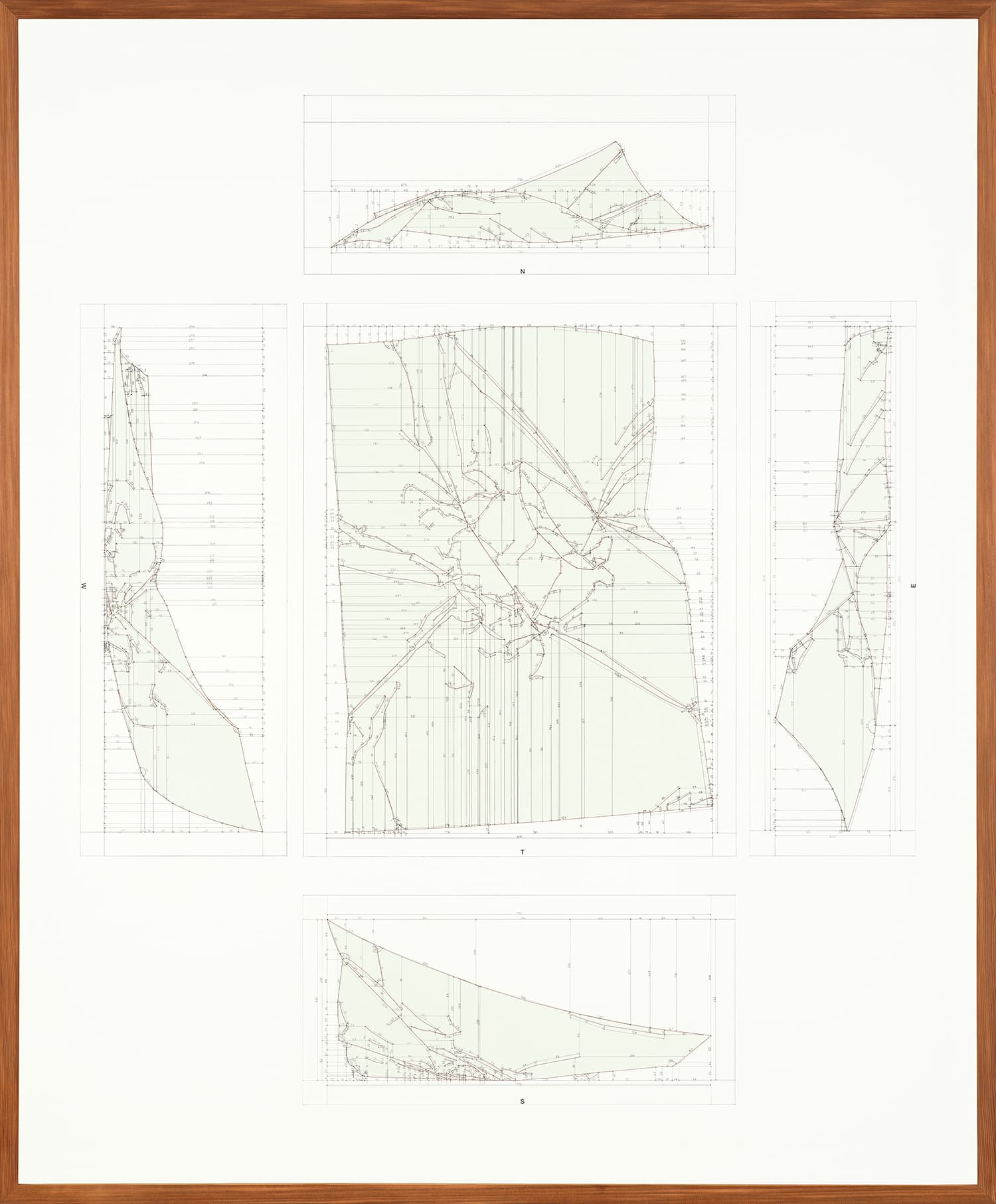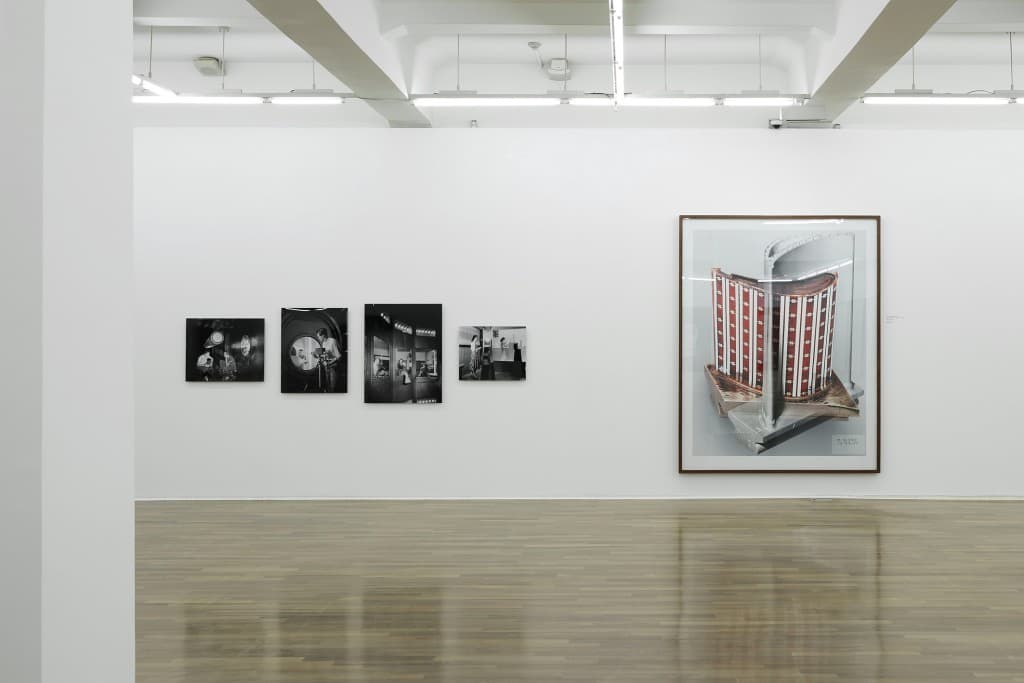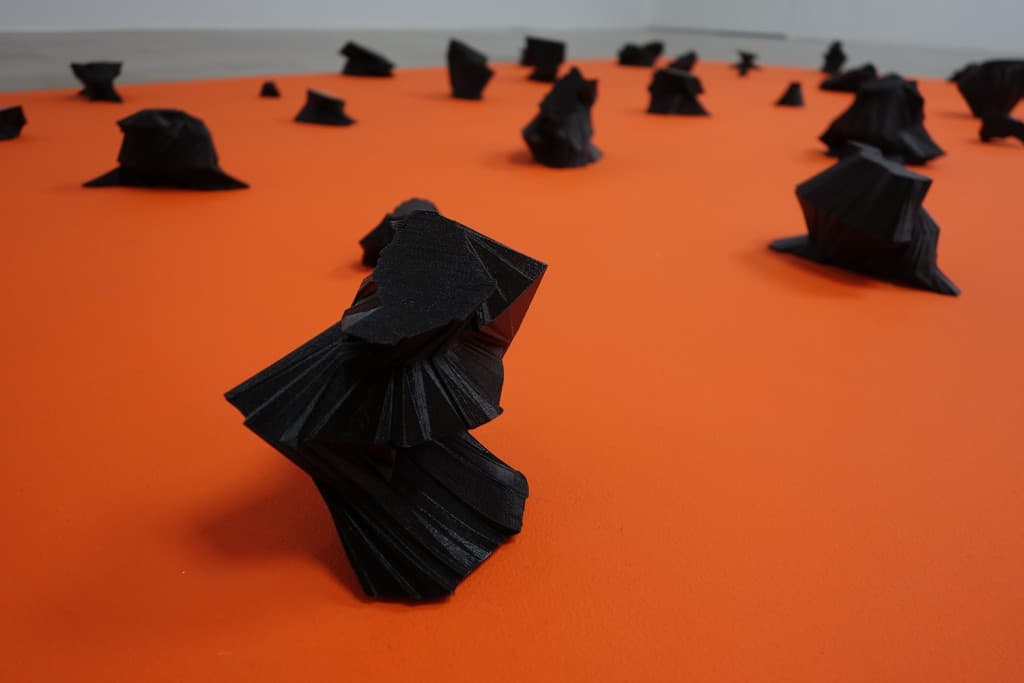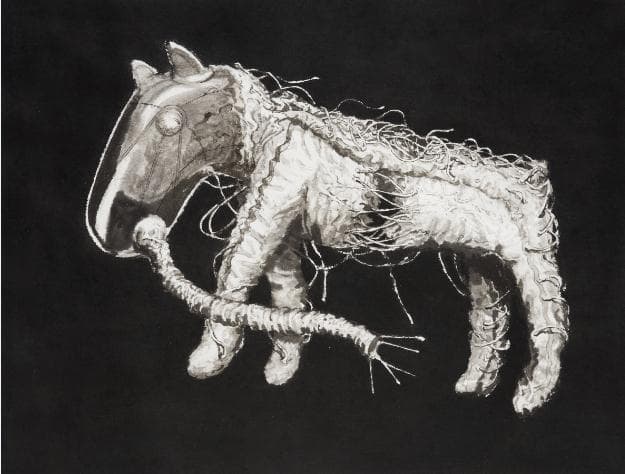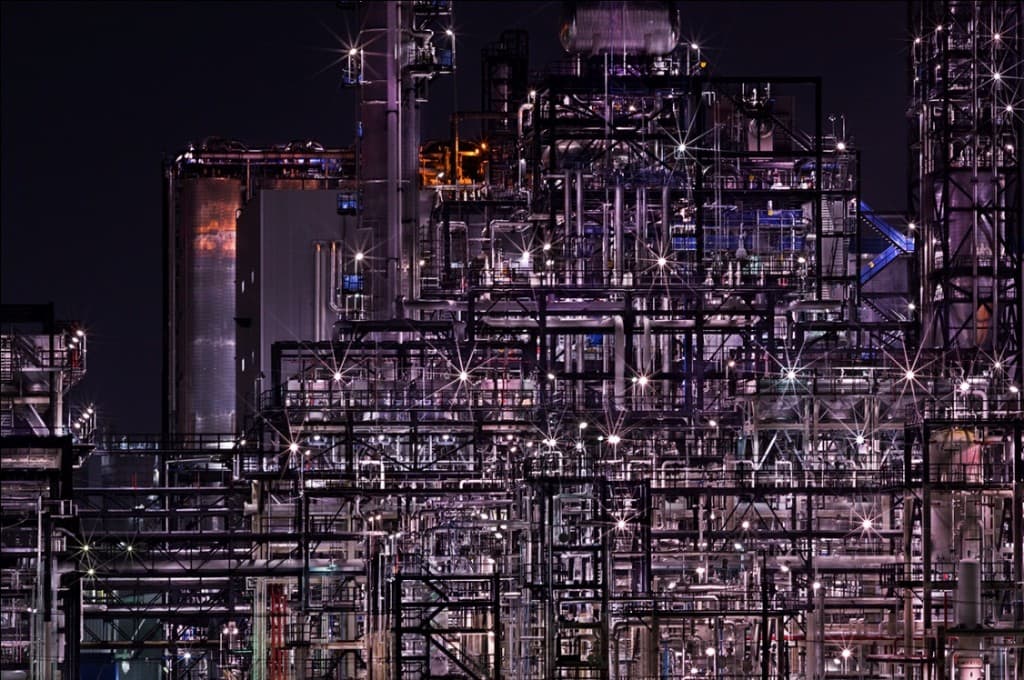20세기 중반부터 인류는 눈부신 과학 발전을 통해 우주가 실제로 존재한다는 사실을 증명했다. 우주는 과학 발전이 보장하는 전리품이었고, 인류는 금세 우주로 뻗어나가 생활하게 될 것이라는 희망적인 미래를 믿어왔다. 우주를 이해하기 위해 습득해야 하는 과학적 지식은 아인슈타인의 상대성 이론부터 기계 엔지니어링을 거쳐 여러 철학, 인문학적인 논쟁까지 이르며 발전했으며, 우주에 대한 인류의 환상은 수많은 대중문화 텍스트를 통해 상징적으로 표상되었다.
전시 «우주생활»은 앞서 설명한 우주적 질서에 인류가 적응해나가는 과정을 되짚어 보는 자리다. 다시 말해, 우주라는 덧없는 시공간에 대한 실제적 감각을 지니고 살아가는 것, 즉, 환상의 온도를 낮추고 과학적 감각을 유지하는 것을 의미한다. 이를 위해 우선, 미항공우주국(NASA)에서 공개한 수 많은 기록 중 엄선된 84점의 이미지가 전시된다. 로켓을 쏘아 올리기 위한 엔지니어링부터 인간 생활의 극한을 상정한 갖가지 실험까지, 우주를 과학적으로 증명해보고자 했던 인류의 여정을 본 전시를 통해 한 눈에 통찰할 수 있다. 거기에는 우주를 실재의 영역으로 끌어내리기 위해 끈질기게 노력했던 20세기 인류의 숭고한 염원이 들어 있다. 또한 이 전시에는 김나영+그레고리 마스, 김상길, 김지원, 김홍석, 박아람, 정재호, 조춘만 등 현대 미술가의 작업도 함께 전시된다. 이들 작업의 공통점은 서로 다른 방식으로 과학과 기술에 대해 다루고 있다는 점이다. 어떤 작가에게 과학은 신비이고 어떤 작가에게는 실제이기 때문이다. 즉, 과학과 기술에 대한 표상을 재현하는 다양한 시각적 방법을 통해, 인류와 우주 사이의 논리에 대한 감각적 인식의 지평이 현대 미술가를 통해 어떻게 확장되고 있는지 살필 수 있다.
과학적 지식과는 거리가 먼 대부분의 일반인에게 여전히 우주는 판단이 불가능한 세계다. 접근하기 어려운 언어와 논리로 구성된 환상의 영역이기 때문이다. 여전히 우주는 대부분의 인류에게는 과학 기술을 통해 증명된 실재의 영역이 아니라, 이미지와 말과 감정과 상상의 생활이다. 아마도 현재의 인류에게 우주생활은 무중력의 우주공간 속에 사는 생활이 아니라, 우주에 대한 지식을 섭렵하고 더 큰 세계에 대한 판단력을 넓혀 나가는 생활일지도 모른다.
참여작가
나사 이미지, 김나영+그레고리 마스, 김상길, 김지원, 김홍석, 박아람, 정재호, 조춘만
장소
일민미술관 1, 2, 3 전시실
주최
일민미술관
전시기획
이영준
The prospect of space life lies over the horizon but it’s stuck in our living room
Our space life started on April 12, 1961, the date on which Yuri Gagarin had a first space travel circling around the earth orbit on board the Vostok 1. If ‘we’ are part of the Soviet Russia, which was not the case at that time, our space life would have started that day. Thus the space age did not arrive on that day. However, the arrival of the space age meant that people with different ideologies and social systems recognized themselves as having common fate on earth. During the cold war period, not only the world, but also the space was split in half. The space life was possible for Koreans due to the US effort of space exploration.
Regardless, the splendid rhetorics of space exploration bring us the dreams of space life. The space travel program of the Virgin Galactic makes us feel that the space life is quite close to us. Is this how ‘our’ space life begins? Maybe the space life might be the one in which we forget about all the troubles of earthly life. Then the space life sounds a little bit sad, as it seems to loose the sense of the infinity and shrinks all the way down to the scale of the Earth.
The brightest prospect of the space life was probably proclaimed by Thomas Paine, the former NASA director. In an article published on the 19th of July 1969, the date on which Neil Armstrong landed on the Moon, Paine talked about too optimistically about a prospect of space life.
“The cost of the travel to the Moon will be set at 10,000 dollars in 1984. By that time, we will have the regular long distance nuclear powered rocket service to the Moon. By 1984 a space station will circle around the Moon all the time. In the Moon society people will leave the old problems behind and yield great energy. The progress in the Moon society will surely be duplicated on the earth.”
Perhaps the space life at that time was full of pleasure principle. However, after numerous accidents and disasters, the space life these days has been replaced with reality principle. The space life is part of our life on condition that the fantasy is part of our life. It is also part of our space life that we get to know about what is going on in other parts of the world in terms of space exploration, like the failure of the Virgin Galactic or ESA’s recent achievement of landing on comet.
So it looks appropriate that the exhibition titled Space Life is to be held in 2015. It is about the time when the space projects of the East Asian countries like China, Japan and Korea took their shapes. But this exhibition is not solely intended to celebrate the success of the space projects. As the fantasy of the space grows larger, its temperature should be regulated using reality principle. What is given to us in terms of the space life is just a bunch of images and data. The space life is an odd life in which its images are tremendously grandiose and sublime, but at the same time lack an entity.
However, that does not mean the space life is just an illusion. Although we are living apart from the harsh physical condition of the outer space, protected by the earth atmosphere, our daily lives are governed by the force of the Sun and the Moon. Even more, farmers’ and fishermen’s lives are directly determined by the workings of those stars and planets. The space life does not just comprise of the experience we get on board a spacecraft. Rather, the space life is based on the recognition that minute details of our earthly lives are related to the faraway space. The space life also incorporates an inquiring attitude to understand the sublimity of the space and the human endeavor to explore it. In such a life, fantasies and illusions get deconstructed.
And yet these days the knowledge is obtained through the images. So the space life requires peering into the images of the space projects and analyzing them. The exhibition Space Life shows the images of space projects from the NASA collection. But this exhibition is not solely composed of science images. It is also composed of the artistic images by Jiwon Kim, Jo Choonman, Gimhongsok, Jung Jae Ho, Sanggil Kim, Rahm Parc and Nayoungim+Gregory Maass. For some artists science and technology are mystery, while to some reality.
We come across an important question at this juncture. Who is the subject of space life, if it is ever possible? It is not the ordinary people as they would dream about; it is the government. As the space project requires a lot of planning and money, no private corporation can initiate it. If one wants to know whether our prospect of the space life would be realized, one should stop dream about it and check the government’s plan. “Long Term Plan for Space Exploration” filed by various Korean government agencies in 2013 contains numerous ambitious plans.
••• The development of a Korean type launch vehicle that can put a 1.5 ton class utility satellite on low orbit (600km-800km)
••• The independent development of the essential technology for the satellite that can cope with diverse public needs
••• The exploration of planets including the Moon and the Mars for the sake of the expansion of space activity and the progress of space technology
••• The nurture of the corporations specializing in space technology and the vitalization of space industry through competitive technology
Leading role in an international collaboration initiated by Korea for the sake of big science that leads to the development of a 3m class space telescope for observing the deep space and the research into the origin of the space focusing on topics as the accelerating expansion of the space, dark matter and dark energy.
According to these plans, the Moon in the future will become a crowded space. The Ocean of Tranquility, Neil Armstrong’s landing site in 1969 might become as busy as a local bazaar. The immigration of the massive population on to the Moon will surely ruin its environment. Nevertheless, there is a significance to the space exploration. It will not produce any profit that can immediately help our daily lives. The real significance of space projects is that they broaden our field of vision confined to a narrow territory of Korea to the scale of the universe. That is why the movie Interstellar has been extraordinarily popular in Korea. But the physical range of our thoughts shrinks back to the earthly scale. However, even the astronauts are not fairies that have lunch on the Saturn and dinner on the Jupiter. Back on earth, they have families to take care of and taxes to pay. The space life is the form of living in which the infinite space of the universe is freely connected to the confined space of our daily lives.
The power of science should neither be worshiped nor negated. The space life is not about mythifying science but about examining and studying it.
Artists
NASA images, Nayoungim+Gregory Maass, Sanggil Kim, Jiwon Kim, Gimhongsok, Rahm Parc, Jung Jae Ho, Jo Choonman
Venue
Gallery 1, 2, 3
Organized by
Ilmin Museum of Art
Curated by
Young June Lee

